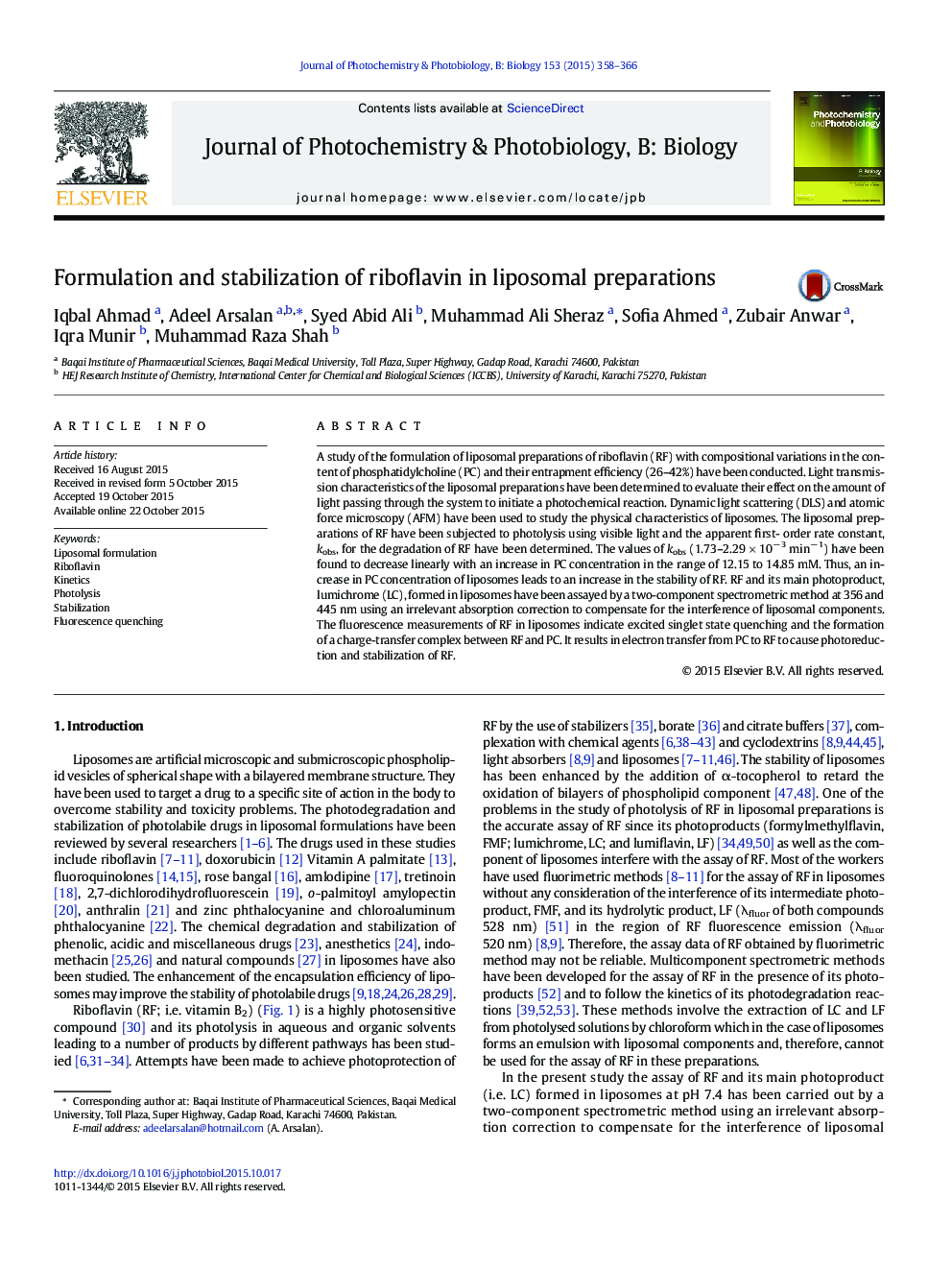| کد مقاله | کد نشریه | سال انتشار | مقاله انگلیسی | نسخه تمام متن |
|---|---|---|---|---|
| 30141 | 44460 | 2015 | 9 صفحه PDF | دانلود رایگان |
• Kinetics of riboflavin (RF) photolysis on entrapment in liposomes has been evaluated.
• There is a correlation between rate constants and concentration of phospholipid.
• There is a correlation between %T of liposomes and phosphatidylcholine concentrations.
• RF fluorescence quenching is a function of phospholipid content in liposomes.
• Mechanism of photoreductive stabilization of RF in liposomes has been proposed.
A study of the formulation of liposomal preparations of riboflavin (RF) with compositional variations in the content of phosphatidylcholine (PC) and their entrapment efficiency (26–42%) have been conducted. Light transmission characteristics of the liposomal preparations have been determined to evaluate their effect on the amount of light passing through the system to initiate a photochemical reaction. Dynamic light scattering (DLS) and atomic force microscopy (AFM) have been used to study the physical characteristics of liposomes. The liposomal preparations of RF have been subjected to photolysis using visible light and the apparent first- order rate constant, kobs, for the degradation of RF have been determined. The values of kobs (1.73–2.29 × 10− 3 min− 1) have been found to decrease linearly with an increase in PC concentration in the range of 12.15 to 14.85 mM. Thus, an increase in PC concentration of liposomes leads to an increase in the stability of RF. RF and its main photoproduct, lumichrome (LC), formed in liposomes have been assayed by a two-component spectrometric method at 356 and 445 nm using an irrelevant absorption correction to compensate for the interference of liposomal components. The fluorescence measurements of RF in liposomes indicate excited singlet state quenching and the formation of a charge-transfer complex between RF and PC. It results in electron transfer from PC to RF to cause photoreduction and stabilization of RF.
A plot of kobs for photolysis of riboflavin versus phosphatidylcholine concentration in liposomes showing a linear correlation with an increase in concentration.Figure optionsDownload as PowerPoint slide
Journal: Journal of Photochemistry and Photobiology B: Biology - Volume 153, December 2015, Pages 358–366
